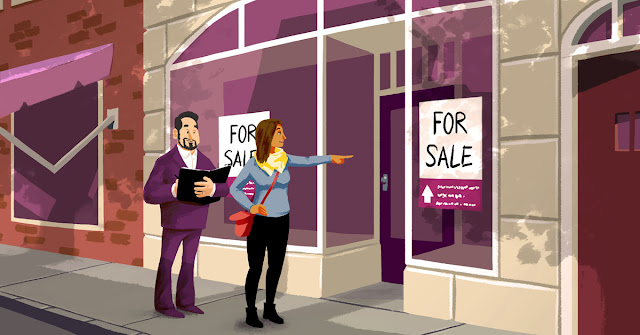How to optimize your Real Estate SEO
There is a significant difference between a real estate site and a ‘regular’ website. Real estate sites have temporary content: when an estate is up for sale, there is a page for it online. But when it’s sold, it tends to leave the internet. In this post, I’ll tell you how to deal with that.
First things first
Next to the ever changing real estate pages, your website needs more static content as well.
About
Even though you’re basically selling bricks, your bricks are quite expensive. It helps when you make your website a bit more personal. Add your team and images of your team. Add a short story about how selling real estate became a passion of yours. A bit of history. All these things together make your website a lot more personal. A real estate agency that understands how to do this is Gottesman Residential.
Area
We have seen our share of real estate sites in our website audits. And I have to say that especially US based real estate agencies know how to promote their specific area. Try to create levels in this. First address your entire service area. If you’re serving the entire state, add content about what’s great about that state. Why should people move there? Why is buying a house there so very interesting for your visitor? Second, see if you can find districts of that main area, like Central Texas and Northeast Texas. Find the metropolitan areas and create pages for specific cities. Obviously, the number of levels will vary per agency.
Update this area based page regularly, for instance with an event calendar and things like that. Your real estate site should become the Wikipedia of local things. RealtyAustin doesn’t only tell you why Austin is nice, it also provides things like a list of schools, a relocation guide, and neighborhood videos.
Contact and location
Personal contact is important for a lot of real estate buyers and sellers. That means that you’ll have to list your contact details in a prominent spot on your website. Make sure your telephone number is listed in a sidebar or header and add a contact page with contact details, a contact form and a map with the location of your office. Our Local SEO plugin will help you a lot in optimizing these details by adding schema.org markup to your address details. It also provides an easy option to add that map and even an option for directions.
One more thing about contact forms: if you’re looking at a certain house, and like what you see, you simply want to contact the realtor. If the website has a contact form in the sidebar next to the estate details, that will make things easier.
IDX and MLS
IDX and MLS are ways of integrating estates, from yourself or other brokers, in your own website. WordPress offers plugins for that. An Internet Data Exchange (IDX) listing tends to be less detailed compared to a realtors Multiple Listing Service (MLS) listing. Both are based upon the same principle: add your listing to a central website and allow other realtors to share your listings via their websites. Both buyers and realtors benefit: every house that’s on sale is served to the potential buyer and the potential buyer will be able to make a better selection before contacting the real estate agent.
I have seen a lot of real estate sites adding an iframe with IDX listings to their website. Let me emphasize again that content in an iframe isn’t on your website and won’t help your website rank as such. If you’re using IDX/MLS, please make sure to import the content to your own website, and serve the listings in your own design. But this does mean duplicate content, as the listing are available on multiple websites. The best SEO practice for your real estate site is to create unique listings for your own website. Note that this might interfere with creating the largest reach for the property you’re selling if your website doesn’t have that many visitors (yet). A way to use both could be to serve unique content on your site and link ‘similar properties’ via IDX/MLS services below that.
The ever changing content of your real estate site
All real estate sites have one thing in common: your real estate listings come and go. Of course, you’ve added a great description to your unique listing of the property. This description, your images and the address of your property will help you rank. If your listing appears in the search result pages, it should feel like a waste to delete it from your website right after the sale. So simply don’t.
First of all, if your real estate is sold, it will pay off to keep that listing online for say three months. Clearly list that the property is sold (perhaps even add ‘within 16 days’ to show your agency gets the job done for sellers as well). Clearly list similar properties on that page to redirect people that searched for a property in that street or district.
Step two is an actual redirect. To optimize this properly, we first need to divide the location into a number of levels. In almost every case, it will pay off to create a hierarchical custom taxonomy for that location, going from state > city > district and as many more levels as your service area has. Doing so will make sure you’ll always have some kind of category to link to.
If after three months that property is still sold, redirect the page to a collection of properties in the same district. Preferably, you’d want these properties to have some similarities to the real estate you’ve just sold, like the same number of rooms, located near schools; you probably know what the majority of your customers values most. The page you are redirecting to could be a taxonomy page or even the search result page for properties in that district. If you can optimize that search page with a proper title and description, that would work perfectly well as a substitute for a category page.
Now if no such page for the same district is available, go up one level and redirect the page to a similar page with results from within the same city. Broaden your location bit by bit. Doing so will keep the temporary URL of the initial property valuable for your website for a longer period of time.
If the property is up for sale again within a few months (which sometimes happens), remove the redirect and reuse the initial URL. After six months to a year, feel free to remove the initial redirect, as Google will understand by now that the property is gone from your catalog.
Keep reading at yoast ->How to optimize your Real Estate SEO


Comments
Post a Comment